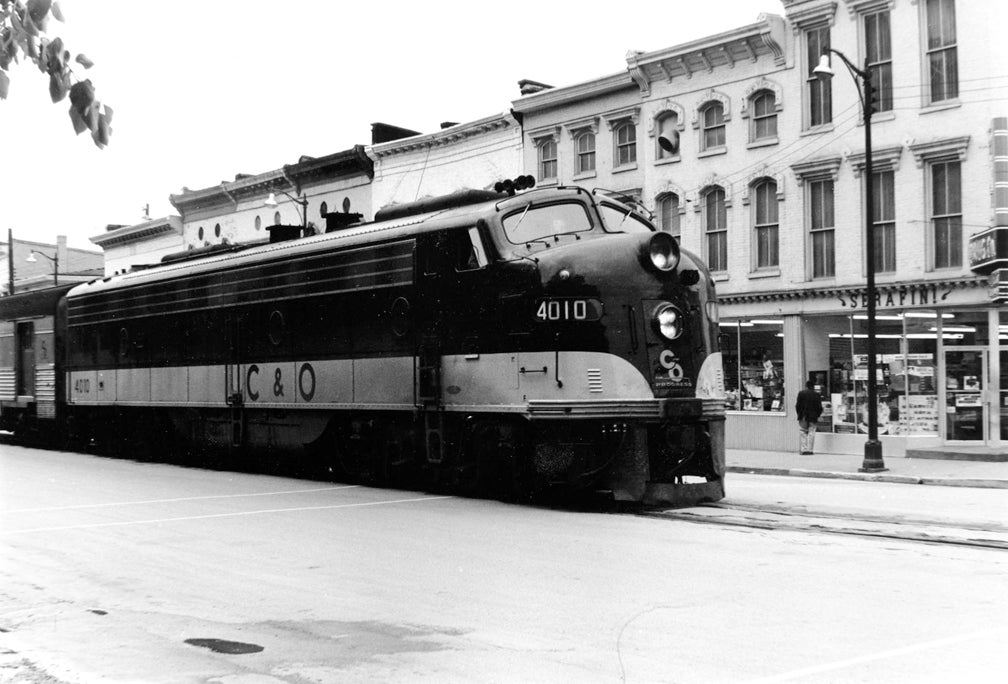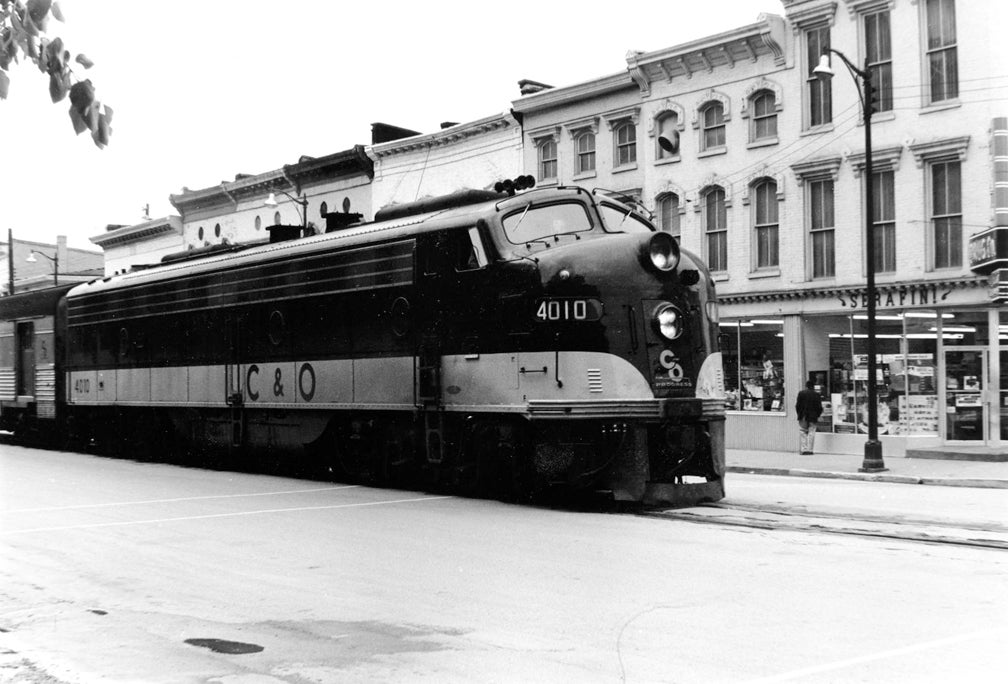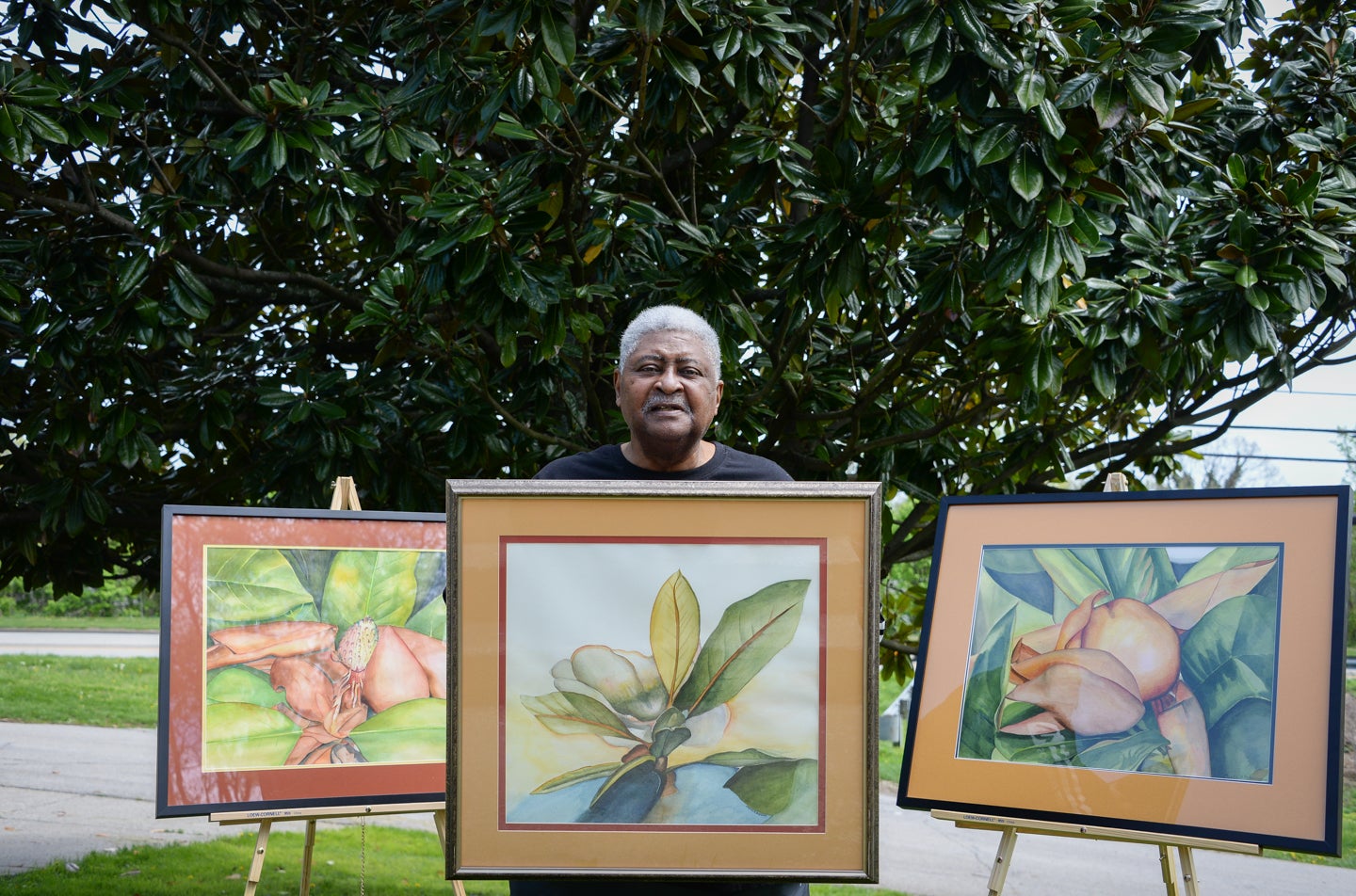In 1835, passenger train service provided by the Lexington & Ohio Railroad (L&O) commenced between Frankfort and Lexington. Two trains a day — at first steam powered, but later drawn by horses — took three hours to cover the 25-mile distance.
Now, it is true that the depot was not in downtown Frankfort, but at the top of Main Street Hill where Kentucky State University’s Exum Center now stands. One person who rode this train was a lawyer from Springfield, Illinois, by the name of Abraham Lincoln, who used it to visit his in-laws in Lexington.
In 1850, the L&O was reorganized as the Lexington & Frankfort Railroad (Lex&F). It now entered Frankfort through the Broadway Street Tunnel under Main Street Hill. At the same time, the Louisville & Frankfort Railroad (Lou&F) reached Frankfort by bridging the Kentucky River. The Lou&F route from Frankfort to Louisville was west to Christiansburg, then north via Eminence to LaGrange, and then west to Louisville.

A passenger and freight depot was built in Frankfort on Broadway between Ann and High streets. In 1850, two steam powered passenger trains made daily round trips between Louisville and Lexington by way of Frankfort. The 29-mile trip to Lexington took 90 minutes while the 65-mile trip to Louisville took two hours and 30 minutes. At Lexington, one could board a train for Cincinnati, Ohio, and at Louisville for Nashville, Tennessee, or Chicago, Illinois
In 1869, the Lex&F and the Lou&F merged to form the Louisville, Cincinnati, and Lexington Railroad (LC&L). LC&L trains left Frankfort at 9:20 a.m. and 5:50 p.m. for Lexington, and 7:08 a.m. and 3:33 p.m. for Louisville. Upon arrival in Louisville, a person by using trains of connecting railroads, could visit every major city east of the Mississippi River.
In 1881, the LC&L fell under the control of the Louisville & Nashville Railroad (L&N). At Lexington, rail service could now be had to Ashland, Sterling, Maysville and Somerset. The year 1881 saw the Chesapeake & Ohio Railway (C&O) arrive in Lexington from Newport News, Virginia, by way of Ashland. From Lexington, C&O provided passenger train service to Louisville via Frankfort and east from Frankfort to Washington, D.C., and Newport News.
In 1889, the Kentucky Midland Railroad (KMRR) began to build east from Frankfort to the Eastern Kentucky Coal Fields. Its track ran east via Georgetown to Paris where it ran out of money. In 1897, KMRR was reorganized as the Frankfort & Cincinnati Railroad (F&C). Its track, however, never reached Cincinnati or the Eastern Kentucky Coal Fields. Paris, Kentucky, became its end of track.
In 1893, six C&O passenger trains stopped at Frankfort, three on their way to Louisville and three bound for Ashland. That year also saw eight L&N passenger trains calling at Frankfort; three as they passed through Frankfort on their way from Louisville to Lexington, three returning to Louisville from Lexington, and a train that ran from Louisville to Frankfort and back to Louisville. Added to this number were six KMRR trains that made three daily round trips to Paris.
In 1910, a new railroad began to build east from Frankfort along the Kentucky River, the Kentucky Highland Railroad (KHRR). The KHRR ran out of steam at Millville. It was then bought by the L&N who extended the former KHRR track south to Versailles for a connection with the L&N track that ran from that city via Nicholasville, Richmond, and Ravenna, to Hazard. The L&N soon began running two daily round trip trains from Louisville via Frankfort and Versailles to Hazard.
The disassembling of Frankfort’s rail passenger service began in 1932 when the L&N abandoned their rail line from Millville to Ravenna. The other two railroads, F&C and C&O, facing the decline of rail passenger traffic during the 1930s Great Depression, also reduced rail passenger service to Frankfort during this decade. Then in 1952, the F&C ceased to provide any passenger train service. This was followed in 1955, with the L&N ending all its passenger train service between Louisville and Lexington.
Thereafter during the 1950s, only two round trip C&O trains still called at Frankfort and this service, circa 1960, was reduced to one daily round trip train, Newport News to Louisville and back. But what a train it was, the George Washington, one of this country’s premier Pullman trains!
On April 30, 1971, the George Washington made its final calls at Frankfort. At 9:08 that morning, it left Frankfort for Louisville, and at 4:20 in the afternoon it pulled from the Frankfort Depot, ducked into the Broadway Street Tunnel and disappeared from sight, never to return. An era in public transportation in Frankfort had come to an end.
Thereafter one did not go to the Frankfort Depot to see who was arriving or leaving and then walk to Putts to have a cup of coffee to discuss what had been seen. Those of us who hung out at the Frankfort Depot to watch the train arrive and depart are today a dying breed of railfans. Sic Transit Gloria.
The Capital City Museum is constantly seeking photos and memorabilia concerning passenger train service here in Frankfort.










